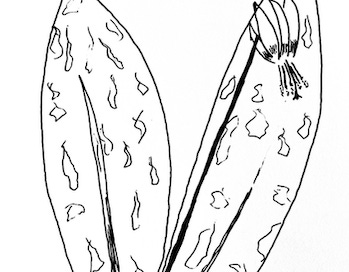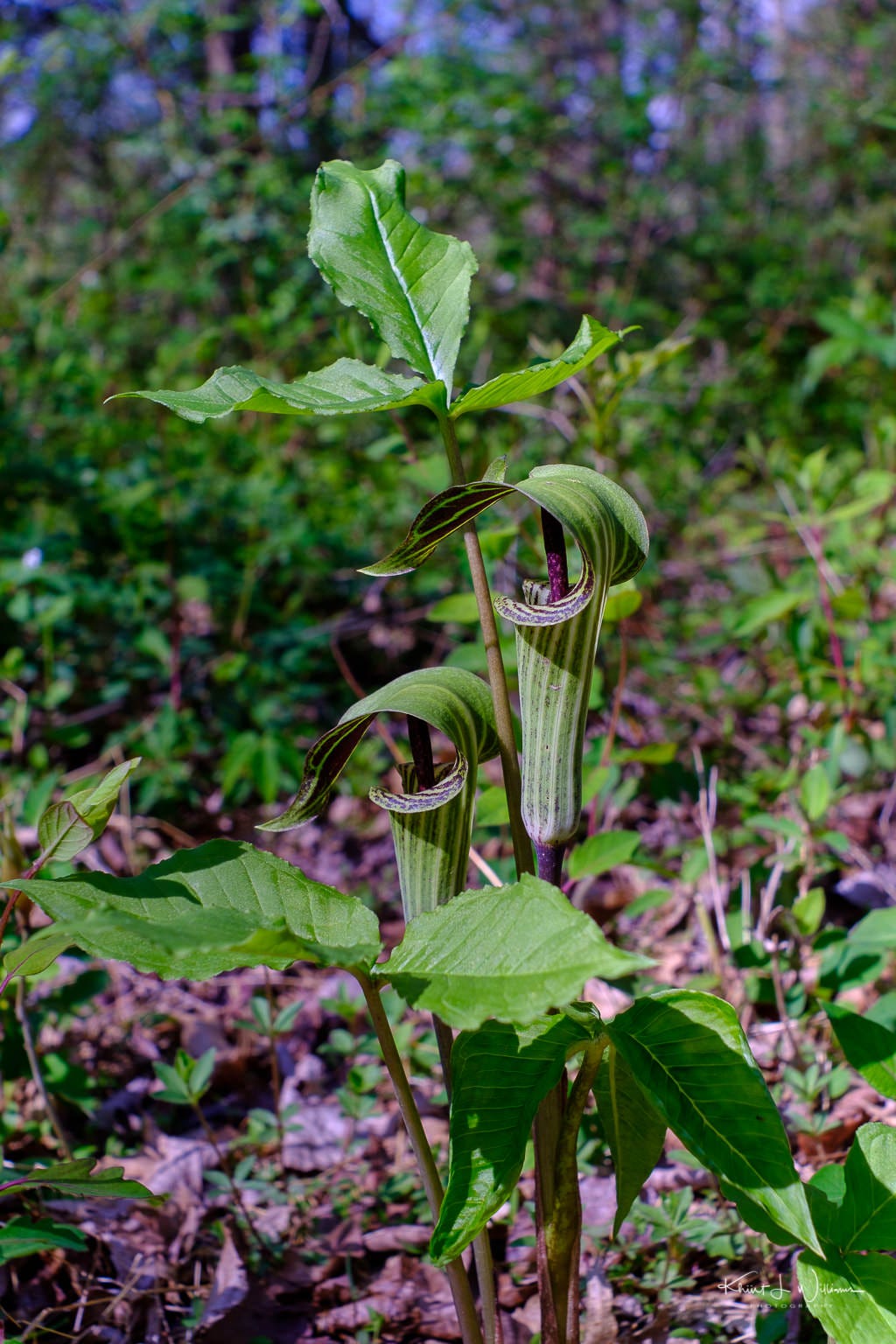ALSO KNOWN AS: Siberian fawn lily, Altai snow, Erythronium sibiricum, Siberian adder’s tongue, dog’s tooth violet
how to know
one - maybe two - leaves that are long, ovular, and pointed at the end
a single flower - maybe two - that is pink, purple, or white bowing at the top
the leaves are dappled like trout sides
The Altai Mountains stand at the apex where China, Mongolia, Russia, and Kazakhstan meet. These magnificent peaks produce springs whose headwaters make up the great Irtysh, the Ob, the main water source for thousands of square miles, splitting through the massive Eurasian continent as the seventh largest river in the world. As illustrated by maps, this region has seen a tumultuous and rich social history whose repercussions continue to this day. At the base of this mountain saw the routes, invasions, and relations forged by the fearless nomadic Mongols as they went into Europe. From the perspective of a map, the center of these peaks spans out in four directions, separating four mighty countries, each one sharing one side of the mountain’s range.
Altaic is the name of the language family of those indigenous to the place and it uses the prefix “Alta”, meaning gold. In this mountain range the remains of the Mongolian City of Karakhot still stand. High minarets and walls from a mighty people. Though these Altaic people are historically herders. As many historians claim, it was in this very flexibility where people like the Mongols held their strength for so long. While not Altaic himself, Chinggis Khan was prideful of the felt tent people, who did not need to be weighed down, roaming like the elusive blue eyed snow leopard, the golden eagle and the ibex who call these mountains home.
A Marker Between Worlds
At around 8,000 feet, in the meadows below glacial expanses, peeking from forests, and lining the precious beginnings of the great Irtysh, the trout lily make the earth blush the moment the snow has thawed. It grows as one or two soft elliptic leaves, long, in the shape of, yes, a fish. These leaves also take the pattern of a fish, dappled with light green and dark purple. The flowers are generally pink, purple, or even magenta. Their flower looks like a bowed horse’s head on deep red stems, tepals pull all the way back like they are pressing into the wind. All lilies have tepals, these are the “petals” of the flower but they’re fleshier. You know how soft a daisy petal is, how it can nearly wither at a single touch. Tepals don’t do that. They have a slight snap when they break. The trout lily’s six tepals curl all the way back and their anthers jut out, full of a golden pollen. There are a total of about 32 species of trout lily, and while most are native to North America, there are six species that span Asia and Europe. The Siberian trout lily is one of those few growing in Siberia, a place that has been so completely cold and unwelcoming that it has been a place of societal expulsion by the Soviets. Even spring is brutally cold. These flowers will rise up within days of thaw, taking in the sloping runoff.
While trout lily can grow in the depths of forests, the flowers long for sun. They take advantage of the forests before the leaves have unfurled on the trees and take in all that still-low spring light. As an ephemeral, trout lily grows all along the limits of the northern hemisphere pulling open their buds courageously to call spring forth.
There might be a week when the early leaves of the Siberian trout lily are their best before bolting into flower. Once they bolt they begin to become bitter and slightly toxic. Before then every part of the plant can be eaten. Even after it’s bolted it can be used as food and medicine. The true source of the Siberian trout lily’s power and the most important part of the plant’s tenacity is an underground stem and nutritional storage organ shaped like teardrops called a corm. This early spring moment is the time when the corms are sweet too, any other time, they’ll be starchy. It’s possible to cut the corm, take some and replant it, delicately into the soil.
Trout lilies are one of an important plant that ethnobotanists are particularly interested in, specifically in the Pacific Northwest, such as The Songhees First Nation, where root vegetables are an important food and medicine and the locations where these plants grow are in salt marshes. Up until very recently archeologists and ethnobotanists separated peoples into being hunter gatherer or agricultural. Trout lilies are among the plants that offer a more complex way of viewing people’s interaction with their world.
The cultivation practices of indigenous peoples in the Pacific Northwest, for example, are neither hunter gatherer, nor agricultural. The seeds are generally not saved, but roots are cut and replanted. Because these marshes were not seen as productive, many of these places have been lost. Not only are they lost, once these spring ephemerals are destroyed it’s very difficult for them to return. Plants that behave aggressively eagerly cover the ground, and while they will not overpopulate forever, the ephemerals may not return. The Altai people see the world as animate, how they, too, have cared for the small corms of the Siberian trout lily as well.
Trout lilies in particular are small and delicate when they emerge from the ground, but in reality they are quite old. Their roots grow slowly, over years, they may only produce one or two leaves a year, and yet beneath the earth they may be very old. So when you see these first spring flowers, some of the most delicate in the world, that can barely be touched without wilting slightly.
Trout lilies have corms, which is similar to a rhizome, only it doesn’t grow out, it grows as if a plant would grow out of the top of your heart, again and again, a single storage structure that keeps the plant protected throughout the cold year. These corms have loose tunics covering their cream white, like onions and garlic. These cover the plant in layers. Every one is the remnant of a leaf from a season that has come and gone. Each year the rootlets dig the plant deeper into the soil, ever protecting the corm from the disturbances of the forest floor.
These sacred corms will multiply, settling beside each other and carpeting the ground in a flood of purple. Younger plants have one leaf, and only grow two in older age. If the plant has two leaves they will flower and go to seed. But trout lilies must reach up to seven years after germinating before they are mature enough to flower. As they grow their leaf will unfurl around the stem, quite like a lantern protects a flame.
A Tooth in the Ground
The flowers are pollinated by bees, some trout lilies are also pollinated by hummingbirds. Once pollinated those flower heads lower from the heavy seed arcing down to place the seed gently on the earth. Then ants will come. Sometimes the trout lily is called dog’s tooth by the shape of their corms, or adder’s tongue with their prominent anthers. These plants are so often compared to animals. But the closest animal to them is the ant.
It’s easy to overlook ants. They are not beautiful or prominent to our eyes. Ants are a mass of faceless bugs who build blindly, making small mountains. But their role in ecosystems profoundly affects the land. Their tunnels aerate the soil, their work brings seeds and the dead into the soil where they can be rejuvenated. These seeds learned to give back to the ants. The Siberian trout tulip has crescent seeds that house a pocket of fat, which the ants will eat and bring to their tunnels and dispose of, thus creating a new garden of trout lilies.
Part of the influential lily family, the trout lily, are closely related to tulips. All lilies have corms, all lilies have tepals. But lilies have a wide range of symbolic importance in many cultural traditions. Tulips, of course, being nearly golden for a certain time. And lilies themselves are emblems of purity and innocence, connected to the image of the Virgin Mary in Christianity, a variety of lilies are used at funerals, with their soft coloring, their smooth sloping tepals, and their slightly bowing flowers. Lilies are in fact a monocotyledon, they have the same makeup as grasses with their parallel venation - parallel veins, and the single cotyledon in the seed: a single chamber that feeds the seed.
The Siberian trout lily is much smaller than many of its lily relatives, though it isn’t to be ingested in large amounts. In so many ways, it carries exactly what it needs in its tiny form.
In Khazakh tradition, boiling corms in goat milk reduces swelling and soreness in waist and knee joints. Species of trout lily are used to reduce fever, heal wounds, and sometimes prevent pregnancy.
They are high in antioxidants, and have been used as anti-inflammatory agents. They are proven aiding to prevent cancer cells from proliferating through a-methylene-y-butyrolactone. The corms can be eaten raw or cooked as a root vegetable later in the season. The Siberian trout lily leaves can be eaten in salads. And the leaves can be used as a tea to treat urinary tract issues.
All along the Pacific Northwest peoples are working to protect plants like the trout lily. And so too, the Altaic peoples are working to resist a pipeline going through their sacred lands from Russia to China. All through the mountain ranges from the Cascades to the Altai, the trout lily heralds spring. These short lived flowers remind us, like the sakura, of the beauty and utter ephemerality of life. And yet, take a deeper look and see what ancient roots stayed alive season after season. They have only days to sing their flower’s song, and yet they live on, tending to the earth, feeding the ants, and weaving the forest floor in the invisible dance of roots.
myth for siberian trout lily
Tchaikovsky music - “The Seasons: March”
Not to be confused with Jack-in-the pulpit, that has a similar corm and protecting leaf structure. It is also a spring ephemeral. Mistake these corms for Siberian trout lily (or any trout lily), and you might lose your lunch.
Or ramps. These two plants grow in the same forests, but the leaves on ramps are longer and are a single shade of deep green.
Forager Friendly?
Generally, yes. Trout lilies are endangered in some places, so please research this before you harvest. Trout lilies are good to eat at the beginning of their season, and before they flower, while some people love them, they can make some people feel sick. These plant have also been used as contraceptive, so it may not be great for those who are pregnant or looking to conceive. In general, harvest with care, don’t harvest the first you see, don’t harvest the last.
Sources
https://www.sciencedirect.com/science/article/abs/pii/S1040618217303105
https://www.sovereigntyherbs.com/blog/rise-of-the-trout-lilies
http://www.efloras.org/florataxon.aspx?flora_id=120&taxon_id=200027628
https://powo.science.kew.org/taxon/urn:lsid:ipni.org:names:534964-1
https://www.rhs.org.uk/plants/127896/erythronium-sibiricum-altai-snow/details
https://en.wikipedia.org/wiki/Irtysh
https://en.wikipedia.org/wiki/Erythronium
https://www.oneearth.org/bioregions/altai-mountain-forests-grasslands-desert-steppe-pa37/
https://cultureunstained.org/crudeconnections-scythians/
https://www.youtube.com/watch?v=lovLaNRW6WM
https://www.inaturalist.org/taxa/332682-Erythronium-sibiricum/browse_photos
https://earthpedia.earth.com/plant-encyclopedia/angiosperms/liliaceae/erythronium-sibiricum/
https://www.sciencedirect.com/topics/pharmacology-toxicology-and-pharmaceutical-science/lilium
https://www.selinawamucii.com/plants/liliaceae/erythronium-sibiricum/
https://en.wikipedia.org/wiki/Corm
http://encyclopaedia.alpinegardensociety.net/plants/Erythronium/sibiricum
https://www.pacificbulbsociety.org/pbswiki/index.php/ErythroniumFour
https://www.gardenia.net/genus/erythronium
https://uk.inaturalist.org/taxa/332682-Erythronium-sibiricum/browse_photos
https://foragerchef.com/trout-lily/
Keeping it Living
Foraging New York: Finding, Identifying, and Preparing Edible Wild Foods, “Wildman” Steve Brill







